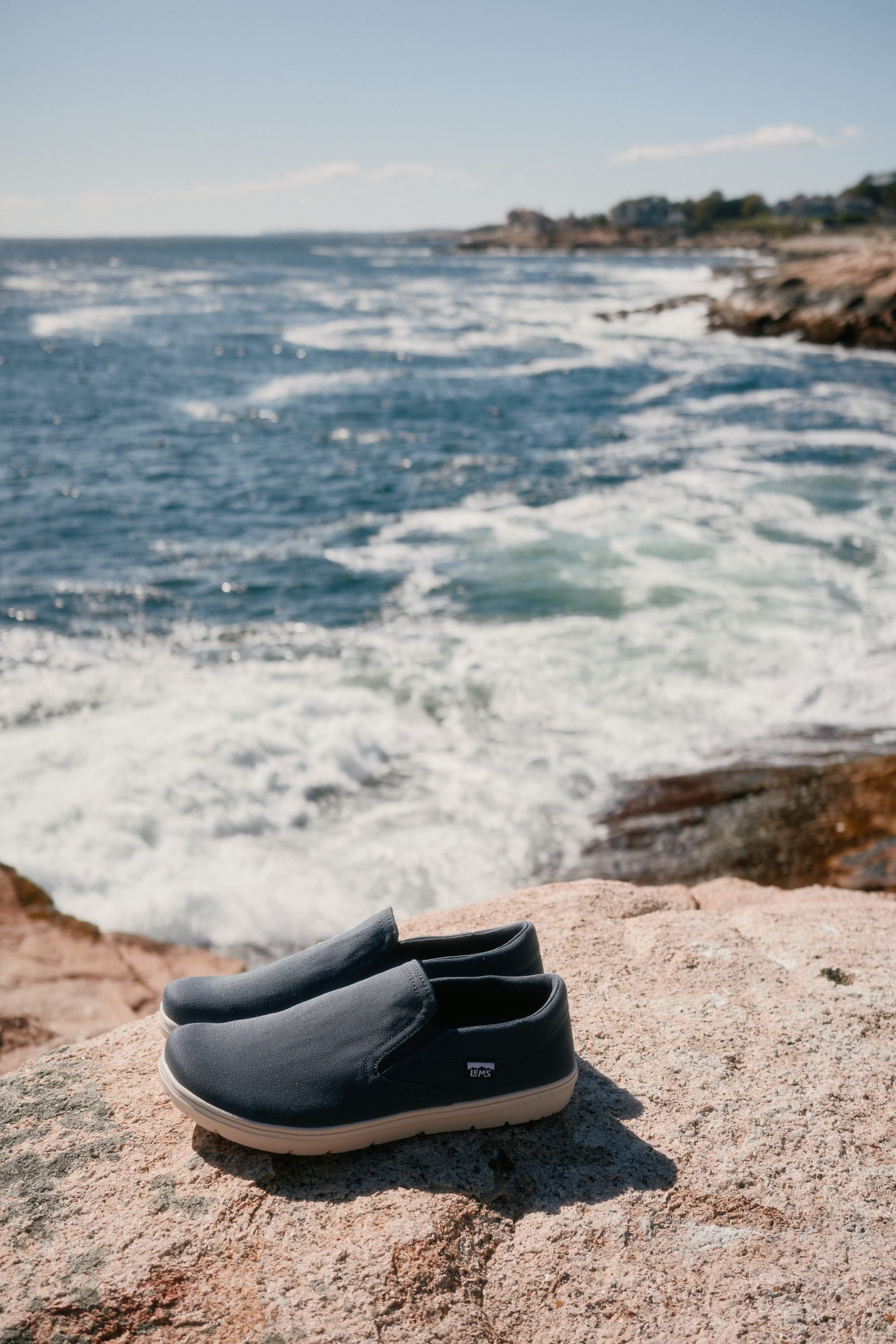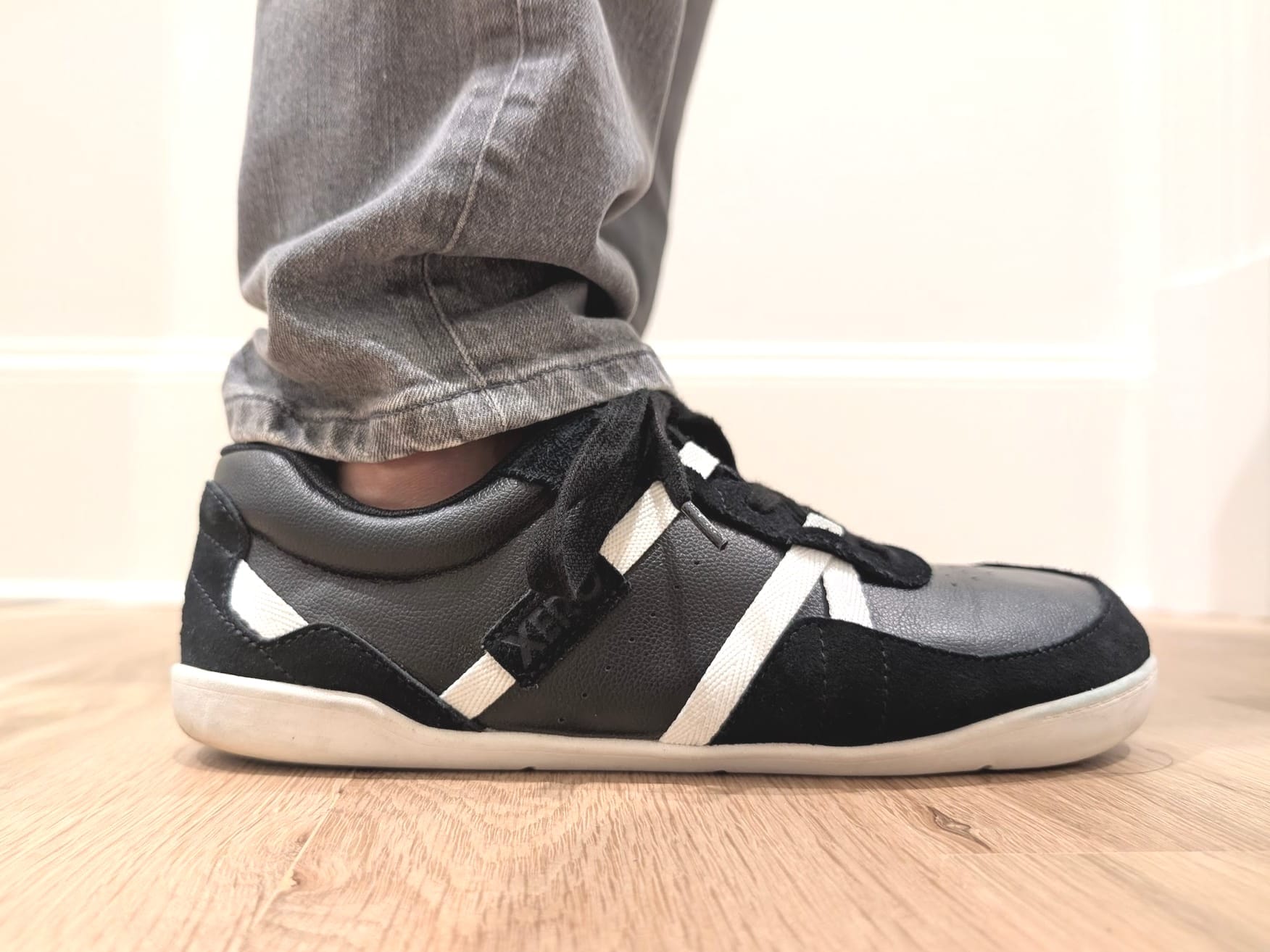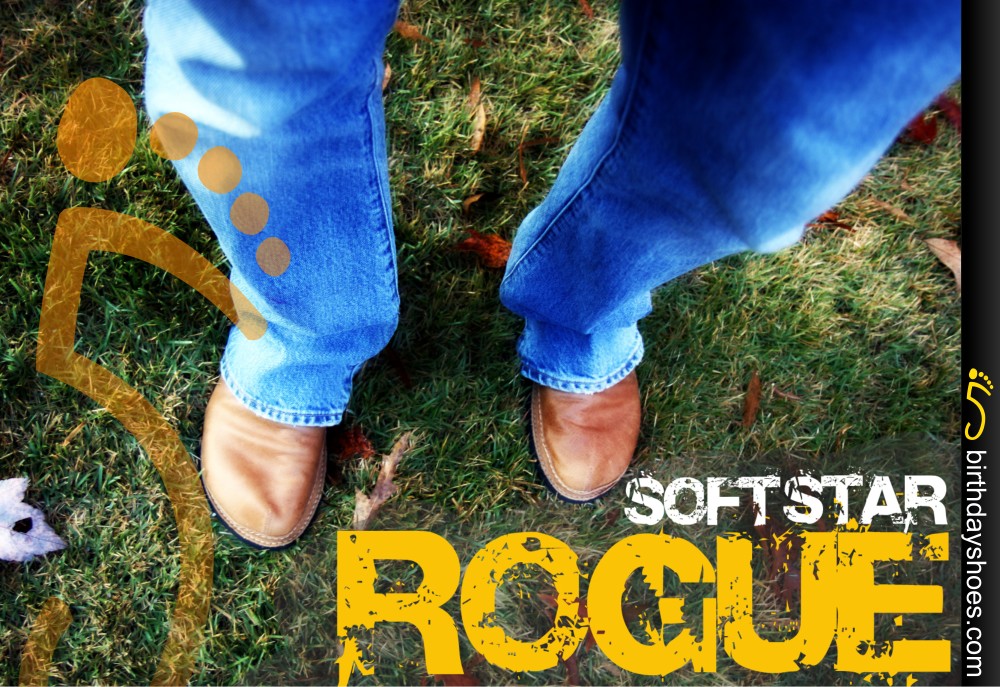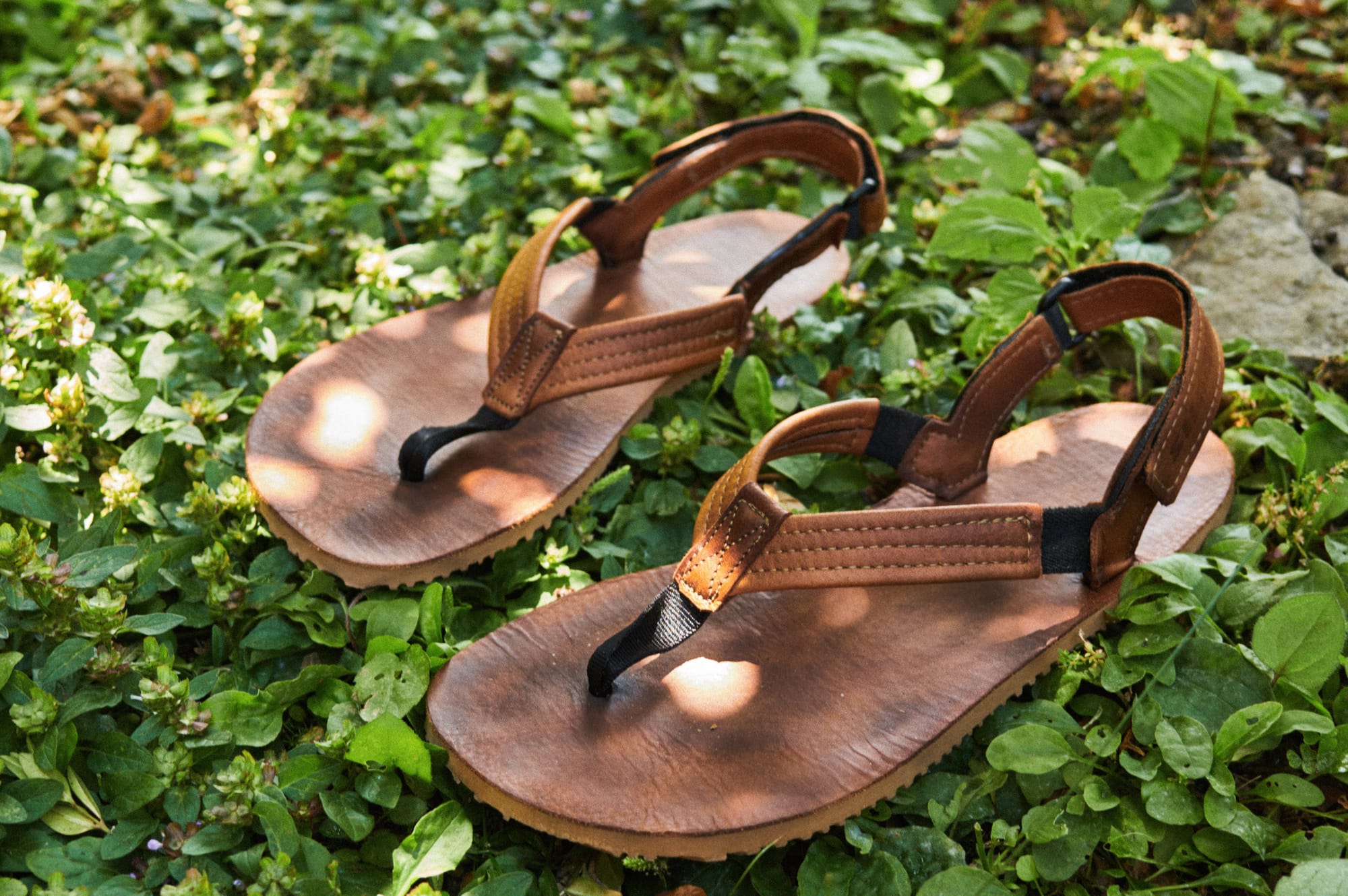Feelmax Kuuva 3 Boot Review
With a waterproof lining, a 2.5mm zero-drop sole and wide toebox, the Kuuva 3 from Feelmax is perhaps the lightest and most flexible waterproof boot in the world! Read on to hear my thoughts as well as a comparison to boots from Lems and Vivobarefoot!
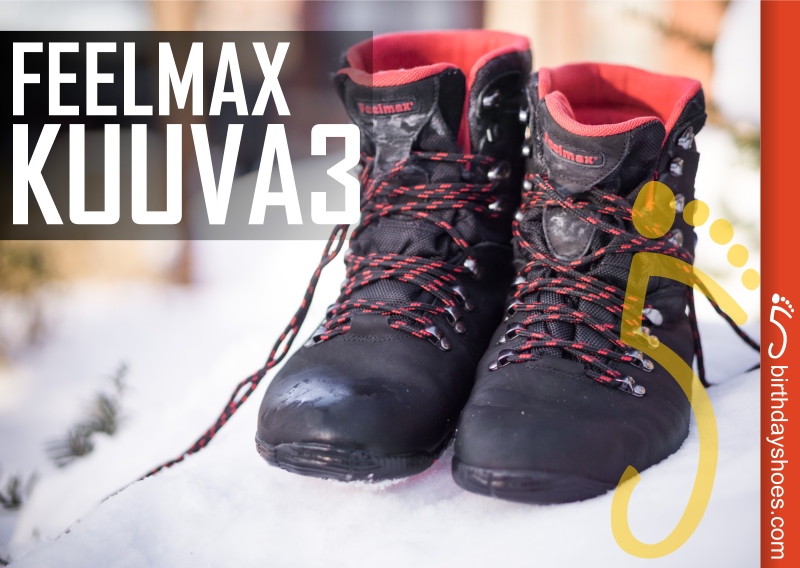
With a waterproof lining, a 2.5mm zero-drop sole and wide toebox, the Feelmax Kuuva 3 is perhaps the lightest and most flexible waterproof boot in the world!
Read on to hear my thoughts as well as a comparison to boots from Lems and Vivobarefoot!
About the Kuuva 3 boot from Feelmax
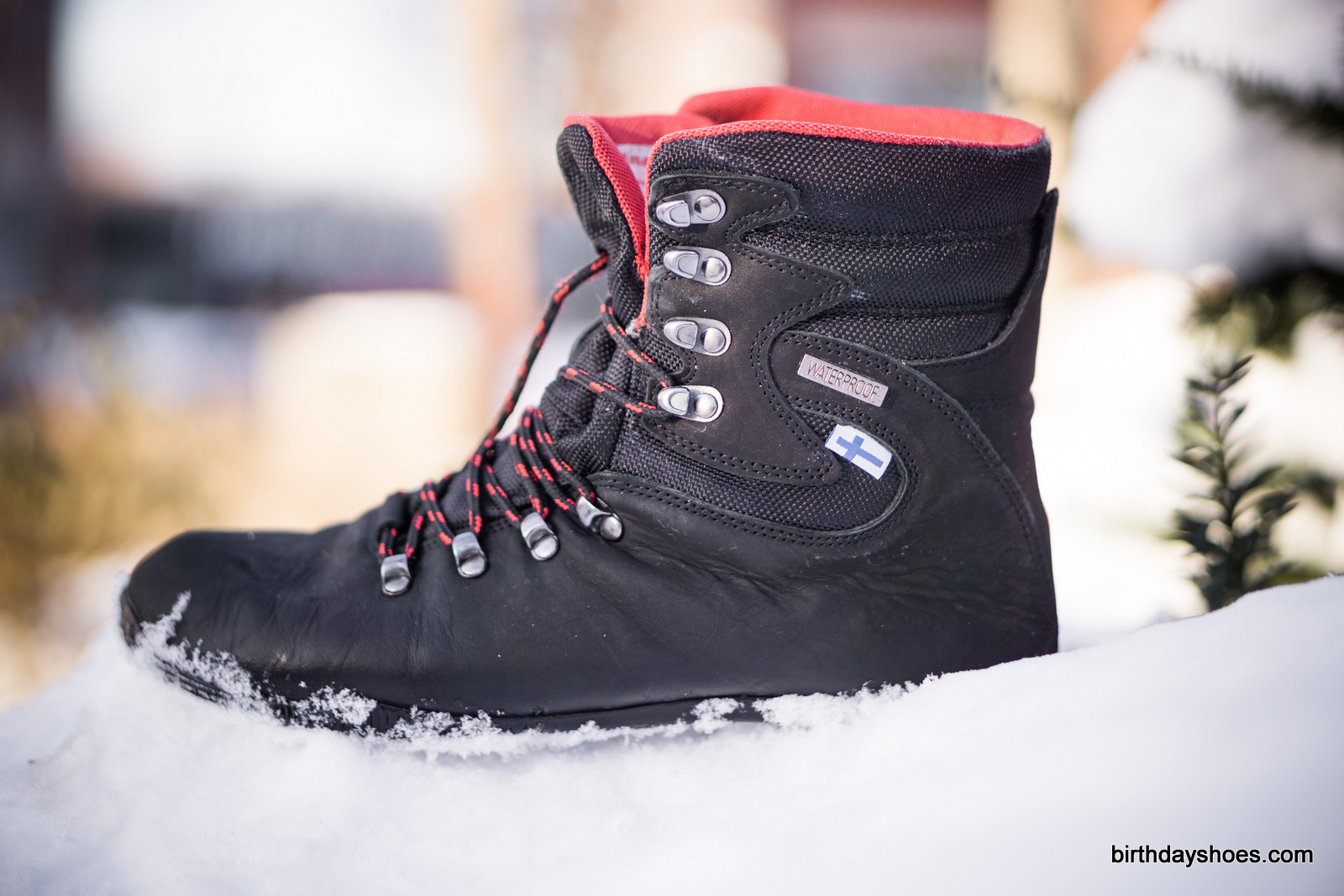
Here's what Feelmax Says about the Kuuva 3:
Weight — 10.2 oz (41 Euro, US 9)
Total Stack Height — Roughly 4mm
Pros —
- 100% waterproof
- Traditional laces with pegs that go up the entire height of the boot
- Very thin, yet protective sole
- Lightweight
- Flexible
Cons —
- Waterproofing hinders breathability
- Shallow treads lack traction
- Needs a true heel loop for ease of putting on and taking off.
Barefoot Scale — The best waterproof barefoot boot in the world! Great for hiking, shoveling, and playing in the snow.
Take a spin around the Feelmax Kuuva 3 via these photos:
Sole
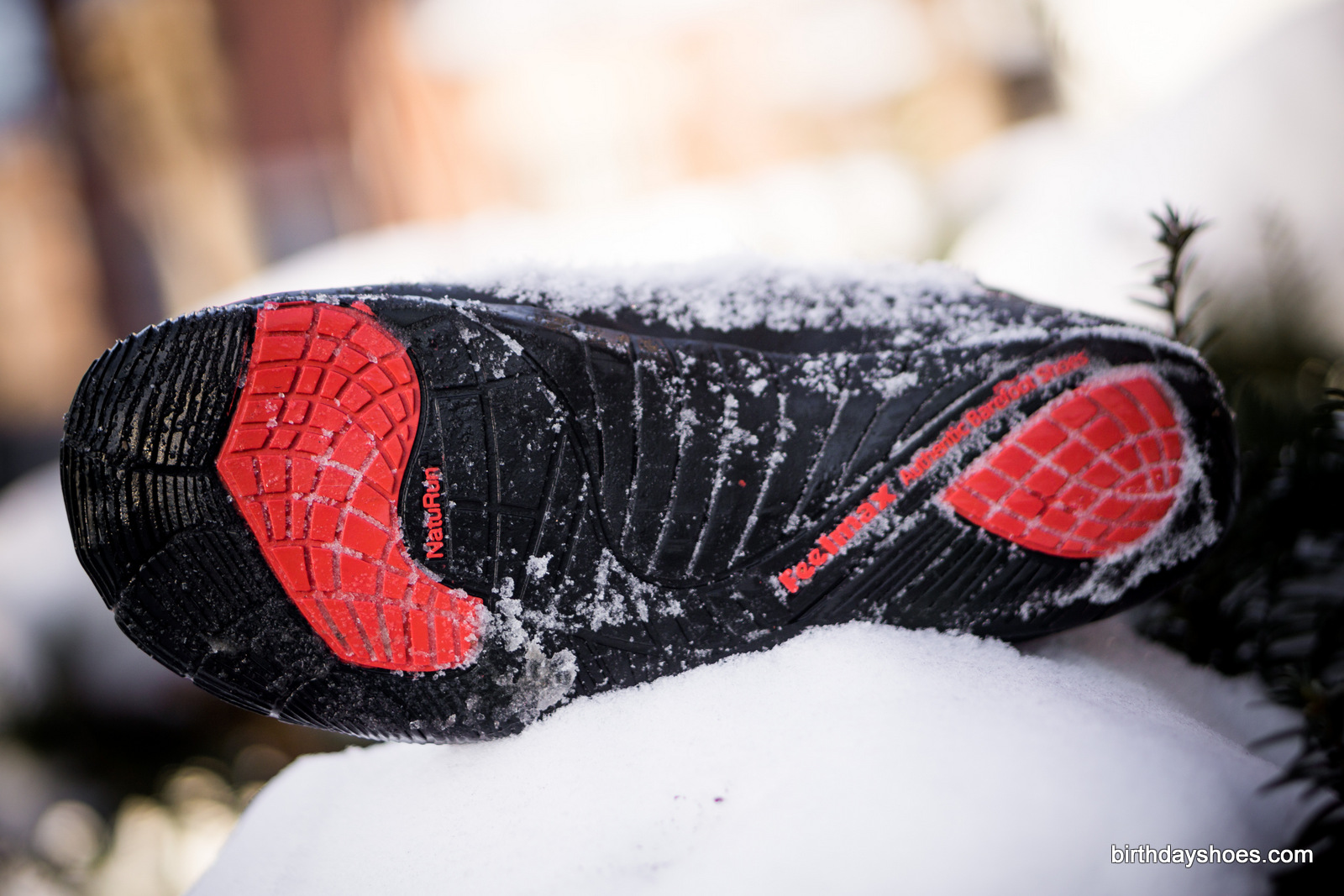
The Kuuva 3 features Feelmax’s NatuRun 2.5 mm outsole that is very flexible and provides a fantastic amount of ground feel that rivals and exceeds many other minimalist shoes, letalone boots!
With the Kuuva 3, you can feel plenty of details from the road, sidewalk, or trail. Little rocks, stray twigs, etc—they can all be felt through the super sensitive, yet protective sole from the Kuuva.
The overall ground feel is similar to a Bikila LS, which is fantastic in a boot of all things!
The boot is so thin that I actually decided to take it for a test run of three miles during the Boston blizzard and they could actually be running shoe in a pinch!
Of course, the height of the shoe does prevent you from being able to truly jog with, but everything is flexible enough to get the job done if you need to make a run for takeout or snacks during the big game.
The sole is completely “squeezable” from all sides and angles and you can even perform an upward toe flex.
Some may be concerned about cold toes with such a thin sole, but the boot materials are fantastic and even after playing in the snow for a couple hours and shoveling a few driveways, my feet were never cold with nothing else but a very thin pair of sport socks and the natural insulation of the boot.
One thing to keep in mind with the Kuuva 3 is that the sole does not provide a lot of traction. The tread and lugs are quite shallow compared to other boots and grip is limited in snowy conditions. The rubber itself is somewhat soft so the Kuuva is quite capable on ice, but if you encounter too much snow, you may find yourself slipping around quite a bit.
This, of course, is a sacrifice that had to be made to make the sole of the Kuuva so incredibly thin and did not detract from my enjoyment of the boot for walking around the city, light trails, shoveling, and sledding, but other users may want a more aggressive sole for some more specialized activities and even among other barefoot boots, traction with the Kuuva is simply average.
Fit and Materials
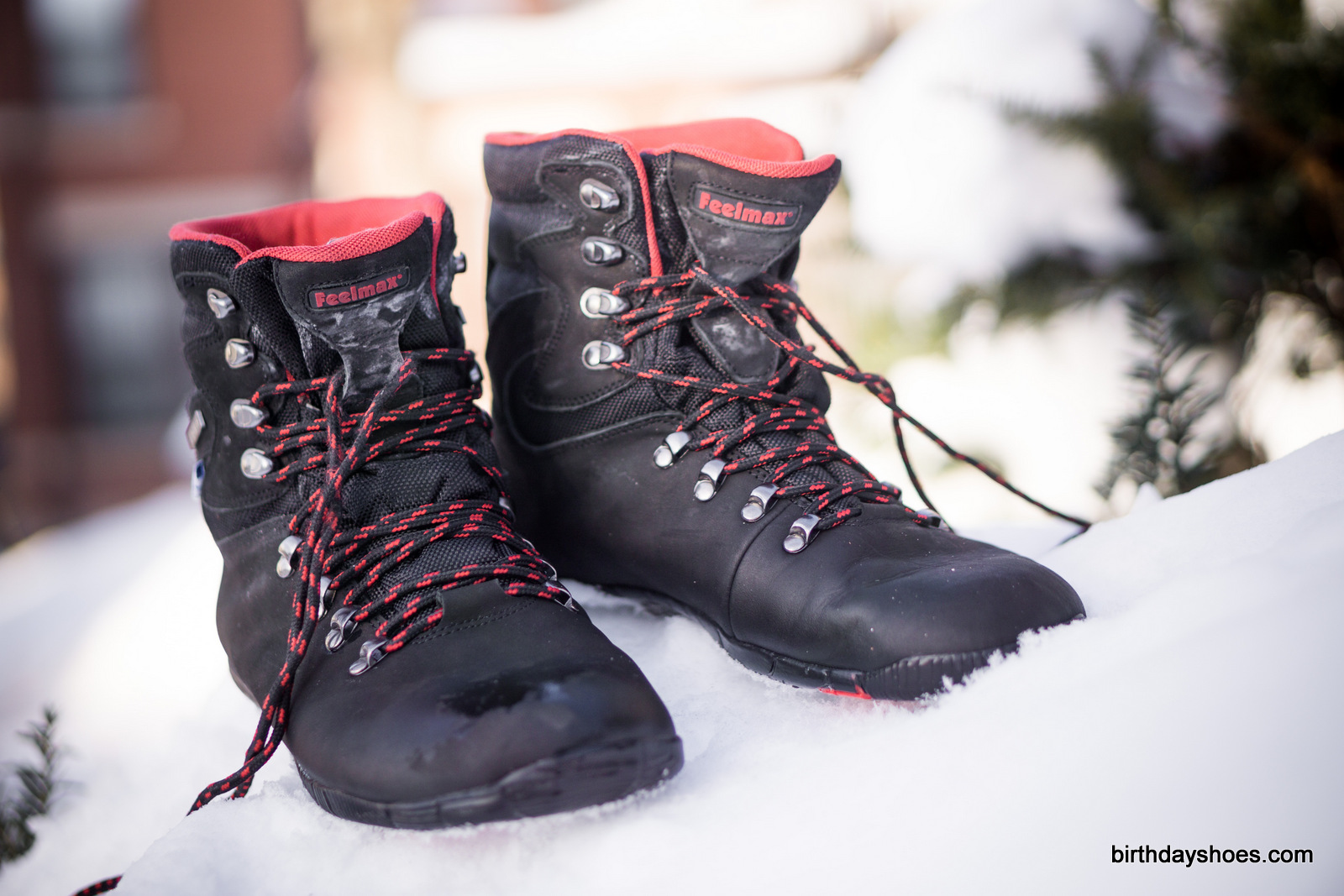
The Kuuva is comprised of a soft inner lining fabric, the 2.5mm NatuRun sole, and a combination leather and nylon upper. The leather extends from the sole of the shoe and about ¾ up the shoe and ankle. The Nylon takes over around the hinge point of your foot and in the construction of the tongue.
One thing that Feelmax can do to improve the overall design in terms of function is in its heel tab. Much like in many running shoes, this tab helps you put the Kuuva 3 on, but this little tab would be much better if it was a true loop.
The waterproofing occurs at the inner lining level, so the leather and nylon upper can actually get wet, but your foot will remain dry inside. The tongue of the boot does not articulate until about ¾ up the ankle of the boot, so the boot is 100% waterproof from that point and below.
Above the tongue placement, snow is very unlikely to get in, but submerging the boot beyond that point will allow puddles to pour all over your foot. Feelmax made a deliberate decision to place the tongue this high to enhance the waterproofing of the shoe and it’s very appreciated when trudging around during a blizzard, enjoying a day of sledding or building snowmen.
The Kuuva 3 has a "Cleanport NXT" organic anti-odor treatment (similar to Aegis) in the insole, which is removable insole. The insole is very thin at around 1mm and is quickly compressed on impact with each step.
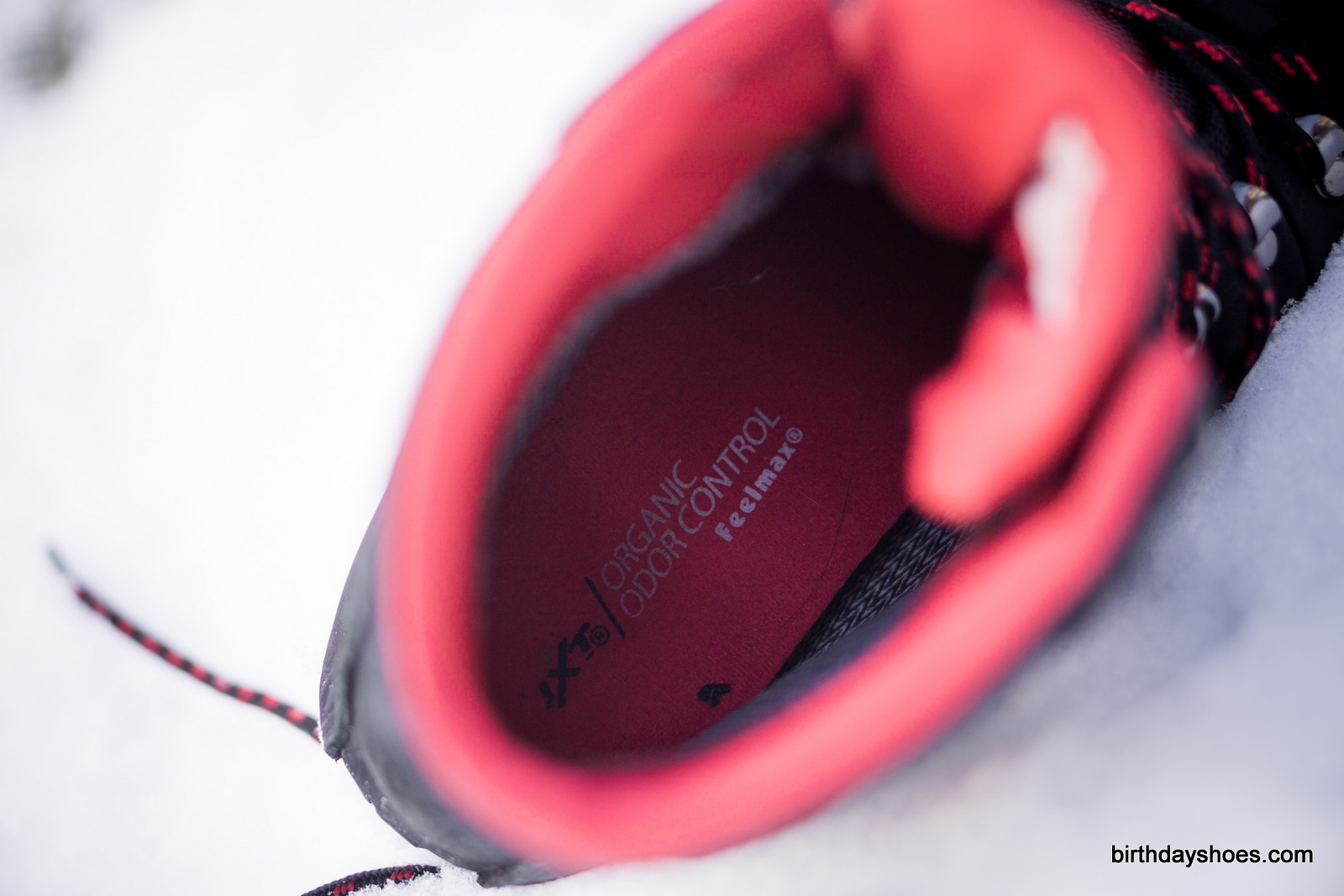
The lining material and inner fabric does a fantastic job keeping everything warm. Despite the thin sole, your toes are likely to stay warm while enjoying winter activities. However, if you stand in place for too long, you may find yourself getting a bit chilly.
Because of the waterproof lining, the boots are not as very breathable. After wearing The Kuuva 3 for an extended period of time, my feel did get a little sweaty, even with socks on, but it’s a compromise to have a truly waterproof boot.
Enjoying the boots in cold weather definitely cuts down on the humidity within the shoe and overall, it is not much worse than non-waterproof boots. However, that is something to think about when deciding between a waterproof boot like the Kuuva 3 and a non-waterproof one, like Lems Boulder or the Gobi (and Gobi II) from Viviobarefoot.
Comparison to Lems Boulder and Vivobarefoot Gobi Boots
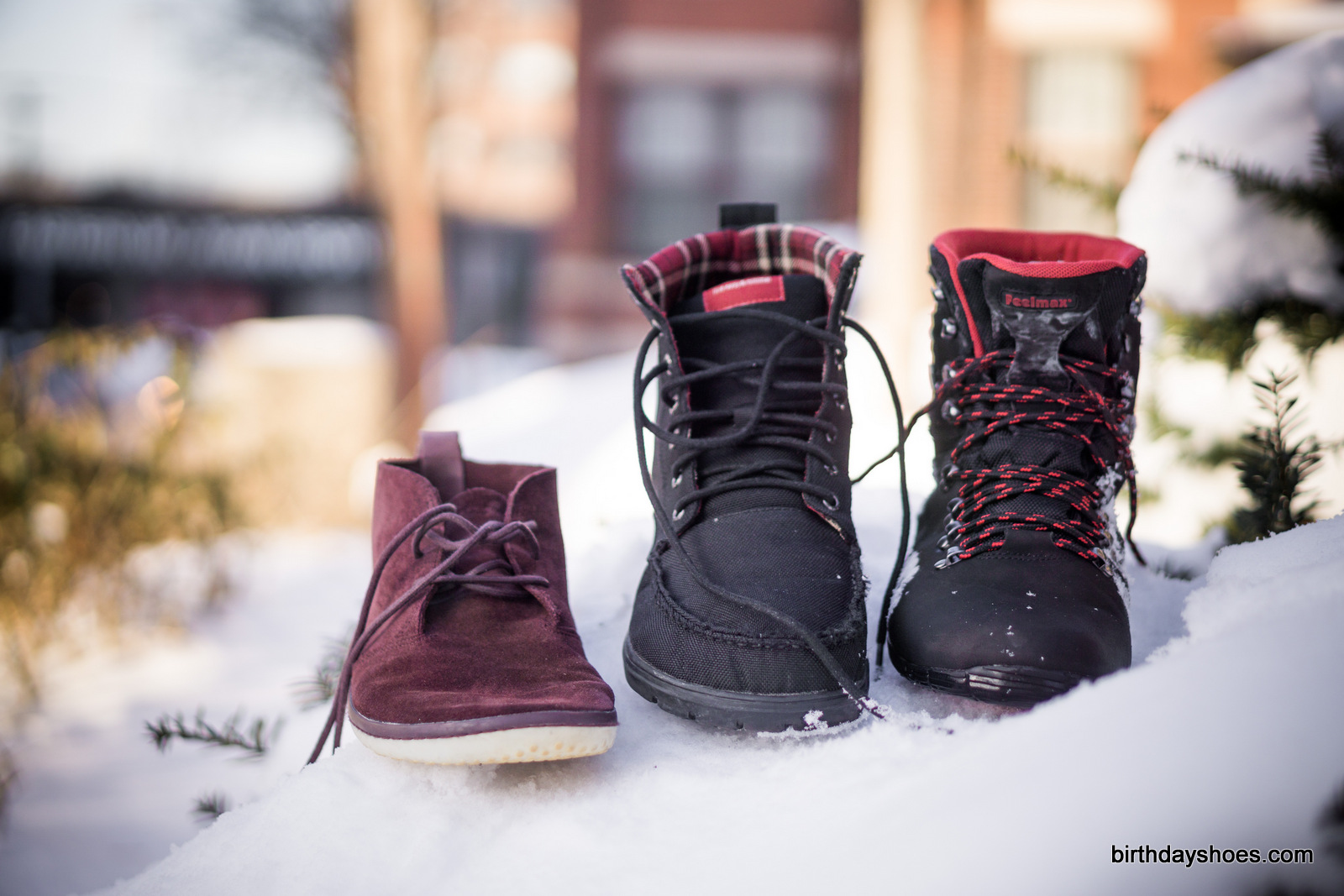
In this shoot-off, we have the Vivobarefoot Gobi and Lems Boulder boot. Both have been reviewed on birthdayshoes and they are fantastic boots.
The Vivobarefoot Gobi has a thin leather upper and a TPU sole, while Lems Boulder has a nylon upper and a 9mm injection rubber sole.
Here are some stats!
- Lems Boulder: Weighs 8.2 oz—9mm sole (See also the black version)
- Vivobarefoot Gobi: Weighs 8 oz—3mm sole (See also the Hopewell leather version)
- Feelmax Kuuva 3: Weighs 10.2 oz—2.5mm sole
As you can see, the Kuuva has the thinnest sole, yet is also the heaviest.
At a featherweight at 10.2 oz, the Kuuva 3 the lightest waterproof boot in the world, but it is still a couple ounces heavier than its non-waterproof barefoot boot counterparts. The Vivobarefoot Gobi weighs 8 oz and Lems Boulder weighs 8.2 oz. The difference is noticeable, but at only 2 ounces, it’s essentially negligible.
However, the Kuuva 3 is a great deal warmer than the other barefoot boots in my collection and the extra ounces of lining and fabric definitely goes a long way in making it a warmer boot.
It is also the only boot among the three that is completely waterproof—of course.
In terms of flexibility, it is a tie between the Kuuva 3 and the Gobi, while the lightweight Boulder is VERY flexible for a 9mm boot, but is just not quite in the same league as the other two boots—regardless, you can roll of ALL THREE of these boots into a little ball with ease. With such great boot options for minimalist lovers, it’s a wonder why anyone would want a traditional boot, all of which feel like cement by comparison.
If you are looking for a flexible and light boot, you can do no wrong any of these three.
In terms of warmth, the Kuuva 3 easily beats out the competition.
The Gobi was never marketed as a winter boot—though it will do just fine as long as you avoid jumping into piles of snow, and the Boulder’s nylon upper is simply not as insulating as the combination leather and waterproof lining upper of the Kuuva 3.
These three boots have completely different looks and while looks are subjective, I would say that Kuuva 3 is the plainer looking of the three.
The Gobi is a stylish boot and is geared towards the urban crowd. The leather upper gives it a supple look and the entire boot has a very trendy look to it—almost hand-made and somewhat hipster. This is cool, since Vivobarefoot just started making actual hand-cut shoes in the form of the Porto, which Justin gave a fantastic review for a couple months ago.
The Boulder is in my opinion, the best looking of the bunch, with a higher toe box, tartan interior and workman appearance. Unlike the Gobi and the Kuuva 3, the Boulder has a structure-stitched toe box, which gives it a more masculine, traditional boot appearance. By comparison, the Gobi and Kuuva have a single-toe design, which makes them look wider and more “clown-like” from some angles (which is common in casual barefoot shoes with wide toe boxes).
The Kuuva 3 is the most winter-capable of the bunch, but its appearance does not scream, “snow boot”. It has a very clean design and the nice, thick lacing buckles are a nice touch, but its design is not quite as eye-catching as the other two boots. Everything serves a purpose: The simple leather upper as insulation and the first barrier to snow, the nylon bits at the top for some texture change and lighter weight, the buckles for enhanced tying and security—it is a waterproof and functional and simple looking boot.
In terms of fit, all three have nice wide toeboxes, but there are quite a few differences to the last used by each manufacturer. The Kuuva boot is the widest of the three overall, from toe to heel, while the Boulder quite a bit more snug in the midfoot and ankle, and the Gobi is somewhere in between. The Kuuva also has the most room for toe splay, while the Gobi has the least amount of vertical space for your toes.
For my feet, the Kuuva 3 is the more comfortable of the three; it has a wide last throughout its entire construction and has plenty of space for toe splay, wide feet, and—perhaps most importantly—thick socks.
As a side note, the Kuuva 3 also appears to be the most durable of the bunch. After enjoying both the Gobi and the Boulder for a year, the Gobi has started to show some loose thread around at the seems in the front of the shoe and the Boulder has exhibited some fraying around the toe box area. The Kuuva 3, on the other hand, does no not have exposed seams, which was most likely a design choice to increase its waterproofing and it’s overall construction feels more robust and durable than the other boots. I would expect the Kuuva to though many tough winters.
Summary
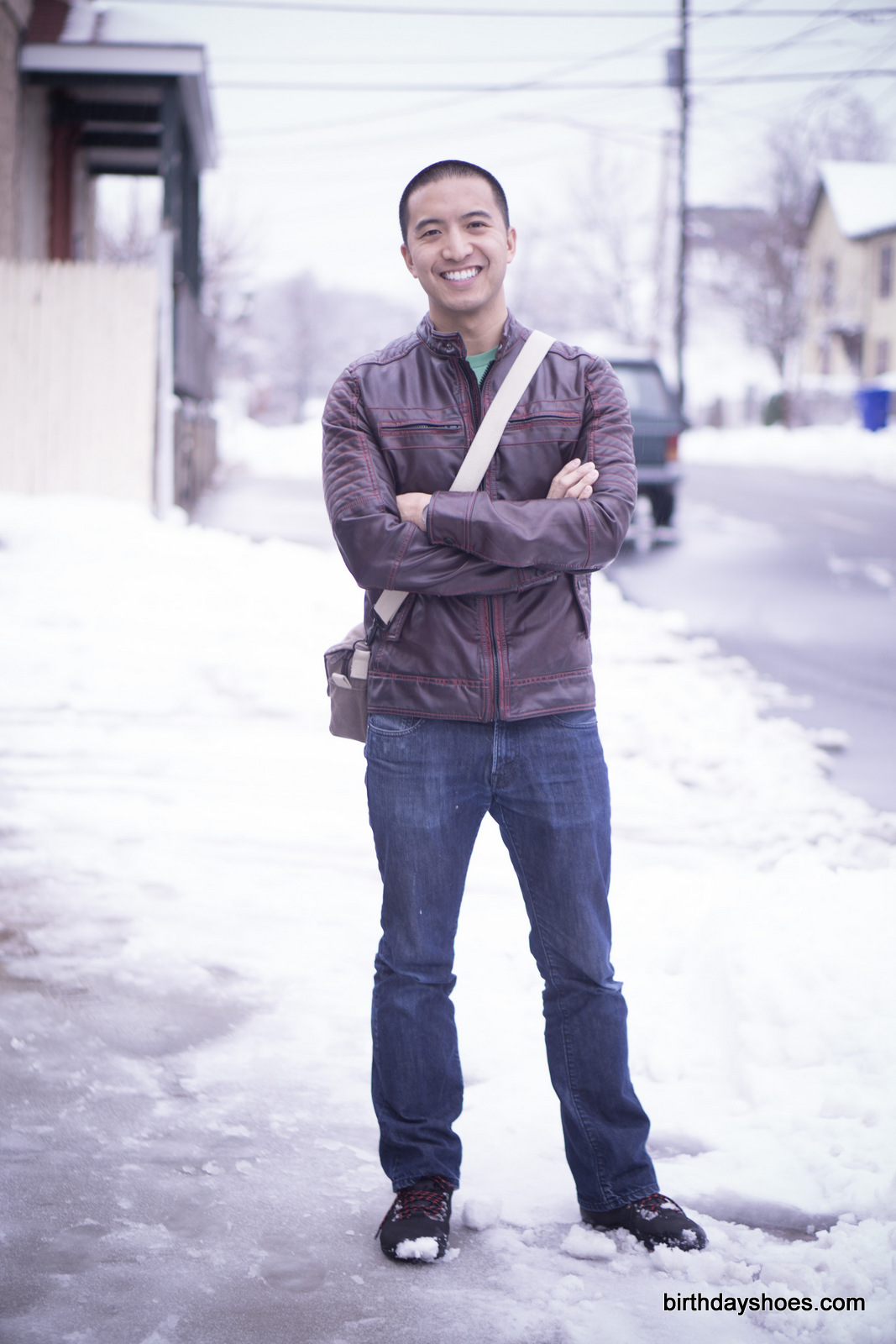
If you are a minimalist enthusiast looking to keep your feet happy during the winter months, the Feelmax Kuuva 3 just about perfect. With a 2.5mm sole, it is super flexible and lightweight, while its waterproof lining and interior fabric keeps things quite warm. Compared to other barefoot boots, the Kuuva 3 gives you much more interior space, warmth, and the addition of a waterproof lining is great for all your winter activities.
And you can get all that for €159.90 (That's about $180).
If you're feeling Feelmax and in the market for their fitness shoes, check out my previous reviews of the Panka 2 and Niesa 3!
A huge thanks goes to Feelmax for sending me the Kuuva 3 for review!

